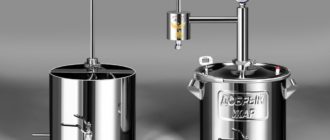
Once glancing at the night sky, a person wanted to get closer to the stars. Study them and understand. A telescope came to the rescue. In the middle of the twentieth century, mass production of optics began. It was then that amateur astronomy was born. Progress is taking place by leaps and bounds, and today the market is replete with various brands and models. The question "Which telescope to choose?" became difficult. Everyone wants to get the best device for decent money, and not another disappointment collecting dust on the balcony.
In order for him to become a new friend, you need to decide who will be the owner:
- Child 8-12 years old
An inexpensive and uncomplicated refractor telescope will do, you can choose in the children's department;
- Newbie
It will cope better with a lens telescope with a 60-70 mm lens;
- Lover
The diameter of the lens should be larger, and the device itself is more compact.
The size and type of device depends on the location of observation: home or nature.
Telescope type
The lens is the main element of the telescope. There are three types:
- Refractory (lens)
For aspiring astronomers exploring the stars.
- Reflex (mirror)
For the experienced amateur exploring space and distant galaxies.
- Catadioptric (mirror-lens)
Combines the best qualities of the previous two. Provides an opportunity not only for observation, but also for astro photography.
Aperture (lens diameter)
The larger the aperture, the more light is collected by the telescope, which will allow you to see small distant objects.
- 70-90 mm - a clear image of the starry sky in urban conditions;
- 150 mm - when traveling to nature for nearby planets and satellites;
- 200 mm or more - for observations of distant galaxies;
- 400mm or less - a semi-professional lens for dark night skies without city light.
Focal length
This is the section between the main mirror (or lens) of the telescope and the collection point of the light rays. The higher, the more distant objects can be viewed.
The size of a telescope is directly proportional to its focal length. Therefore, short-focus devices (within 500-800 mm) of compact size are suitable for.
The focal length has almost no effect on the magnitude of the catadioptric apparatus due to multiple refraction of the count.
Magnification factor
Calculated by dividing the focal length of the telescope by the focal length of the eyepiece. For example, a refractor with a 1000mm focus and a 20mm eyepiece will magnify 50x.
Interchangeable eyepieces (4 to 40 mm) give different magnifications on the same telescope, and Barrow lenses double its focus.
Price
This is not the main criterion for choosing. But essential for the buyer.
- A lens telescope costs from 3.5 to 25 thousand rubles;
- Mirror apparatus - from 14 to 55 thousand rubles
- A catadioptric will cost more: from 18 to 95 thousand rubles;
- A simple children's telescope costs about 1,000. But, if the child is seriously addicted, then the price can go up to 25.
The device with the possibility of astrophotography will cost from 10 thousand to 3 million rubles.





